- Home
- Robert Silverberg
This Way to the End Times: Classic Tales of the Apocalypse Page 2
This Way to the End Times: Classic Tales of the Apocalypse Read online
Page 2
MODERN-DAY WRITERS CONTINUE TO FIND literary rewards in dancing through the apocalypse. A wide assortment of such jolly visions of ultimate disaster is presented here, along with the earlier classics by Verne, Pollock, and Flecker. Among them are Brian W. Aldiss’s view of a world flattened beneath the enormous body of an alien invader, Ursula K. Le Guin’s lively take on the theory of continental drift, Dale Bailey’s depiction of the flood to end all floods, Philip Latham’s meticulous account of the last days of our sun, and more than a dozen more.
The possible variations on the theme are endless. As Robert Frost wrote nearly a century ago,
Some say the world will end in fire,
Some say in ice.
From what I’ve tasted of desire
I hold with those who favor fire.
But if it had to perish twice,
I think I know enough of hate
To know that for destruction ice
Is also great
And would suffice.
Fire or ice, one or the other—who knows? The final word on finality is yet to be written. But what is certain is that we will go on speculating about it . . . right until the end.
—Robert Silverberg
THE
ETERNAL ADAM
— JULES VERNE —
TRANSLATED BY
WILLIS T. BRADLEY
EDITOR’S INTRODUCTION
JULES VERNE (1828–1905) IS UNIVERSALLY considered one of the founding fathers of modern science fiction, although in fact only a few of his sixty-odd novels can be considered to belong to that category. Certainly A Journey to the Center of the Earth, Twenty Thousand Leagues Under the Sea, From the Earth to the Moon, Off on a Comet, Robur the Conqueror, and several other Verne books must be regarded as pioneering works of science fiction. But the preponderance of his output consists of adventure novels published under the collective title of Voyages Extraordinaires and ranging through every part of the world (including some that still counted as unexplored territory in his day) and, though they are unfailingly entertaining, the scientific and speculative content of most of them is negligible.
“The Eternal Adam,” however, one of the last works of Verne’s old age, is science fiction beyond doubt, and a masterpiece of the genre. So far as we know he began writing it in 1904, when he was seventy-six years old and in failing health, troubled by cataracts, diabetes, and the lingering effects of a bullet wound received at the hand of a crazed nephew. Whether he actually lived to complete it is a matter of extensive debate among Verne scholars. At one point he had told his Parisian publisher that he was working on a story called “In Two Thousand Years’ Time,” but no manuscript under that title survives, and “The Eternal Adam” is actually set 20,000 years in the future, not 2,000. When Verne died, on March 24, 1905, at the age of seventy-seven, he left behind a stack of unpublished novels, some of them incomplete, some of them not, and a handful of short stories. Over the next few years his son Michel, a considerable writer in his own right, saw most of this material into print, and from an examination of Verne’s original manuscripts it is possible to see that Michel rewrote a good deal of his father’s work and may have done nearly the entire texts of some of the posthumous books.
“The Eternal Adam” saw its first publication in October 1910 in a magazine called La Revue de Paris, and then later that year as part of a collection of stories entitled Yesterday and Tomorrow. Verne wrote very few short stories; only one collection appeared in his lifetime, Dr. Ox’s Experiment of 1874, and a handful of others were used as fillers to accompany various of his novels. Two of the six stories in Yesterday and Tomorrow are surely by Verne, but the other four, including “The Eternal Adam” were part of the group of unpublished manuscripts he left behind at his death, and, as noted, no one is quite sure how much of them was written by Verne and how much by his son under his father’s far more illustrious name. The eerie and deeply moving “Eternal Adam,” in which archaeologists from a civilization of the far future discover a chronicle of the destruction of the twentieth-century world by earthquakes and floods, is so dark in tone that Michel Verne, in his introductory note to it in Yesterday and Tomorrow, was constrained to point out its “rather pessimistic conclusions, contrary to the proud optimism that inspired the Extraordinary Voyages.” Yet the story, dark as it is, demonstrates true Vernian optimism after all, since mankind does manage to survive the terrible catastrophes he visits upon us, and emerges eventually from disaster to build a new civilization.
“The Eternal Adam” did not appear in English until it was translated by Willis T. Bradley more than forty years after its initial French publication. The Bradley translation was published in the March 1957 issue of an obscure and short-lived science-fiction magazine called Saturn, from which it is reprinted here.
—R. S.
THE ETERNAL ADAM
— JULES VERNE —
TRANSLATED BY WILLIS T. BRADLEY
THE ZARTOG SOFR-AI-SR—THAT IS, THE learned Doctor Sofr, youngest member of the hundred-and-first generation of his lineage—was making his way at a comfortable pace along the chief street in Basidra, capital of the Hars-Iten-Schu, the Empire (as we should call it) of the Four seas. These four seas, the Tubelone, or Northern, the Ehone, or Southern, the Spone, or Eastern, and the Merone, or Western, bounded the vast, irregularly shaped continent, the limits of which (to reckon in terms known to my reader) reached, in longitude, as far as the fortieth degree east and the seventieth degree west, and, in latitude, as far as the fifty-fourth parallel north and the fifty-fifth parallel south.
The extent of none of these seas could be guessed, even roughly, since each merged with each, and a navigator putting out from any one of the four coasts, and sailing always in a straight line, must gain the diametrically opposite coast. For, over the entire surface of the globe, save for one useless islet in the Merone-Schu, there existed no other land than that of the Hars-Iten-Schu.
Sofr was walking very slowly, first of all because the day was warm: they were entering the hot season, and at Basidra, situated on the shore of the Spone-Schu, or Eastern Sea, less than twenty degrees north of the equator, a fierce heat fell from the sun, then approaching its zenith.
But, even more than his weariness in that high heat, the very burden of his thoughts was slowing the steps of Sofr, the scholarly Zartog. While absent-mindedly mopping his forehead, he was turning over in his mind what had been said at the meeting that had just been held, during which so many gifted speakers (among whom, to his honor, he had himself numbered) had hailed the hundred-and-ninety-fifth year of the Empire.
Some, for topic, had chosen history, not only that of the Empire, but the entire history, indeed, of mankind. They had told again the story of the Mahart-Iten-Schu, the Land of the Four Seas originally divided among uncounted savage peoples who lived in wild loneliness, having almost no knowledge of each other. Back to those folk were traced the most ancient traditions. Of still earlier things, nothing was known. True, the natural sciences were now beginning to make out some light, hardly more than a feeble glimmer in the baffling darkness of those earlier times. But even so, by their very remoteness they shunned truly historical study. True history could first take root only in a dim memory of those scattered ancient clans.
During more than eight thousand years, by degrees more fully told and more sharp in detail, the story of the Mahart-Iten-Schu was nothing but a succession of strife and warfare, first between man and man, then between family and family, and finally between tribe and tribe—every living being, every group, small or large, having, in the course of the ages, no other goal than to prove its strength against its rivals, and striving, with diverse and often contrary success, to bring them under its own laws.
On this side of that span of eight thousand years, men’s memories became a little keener. At the outset of the second of the four periods into which the annals of the Mahart-Iten-Schu were commonly divided, legend began to deserve more justly the name of history. But still,
whether history or legend, the recitals seldom varied: they told always of bloodshed and butchery—no longer, it is true, of tribe by tribe, but from then on of people by people. So, all in all, this second period was not much different from the first.
And it was much the same thing with the third, brought to a close just short of two hundred years ago, having lasted through nearly six centuries. It differed only in that it was more brutal, a period during which gathered into endless armies, and fired with endless fury, men had drenched the earth with their blood.
THE FACT WAS THAT A little less than eight centuries previous to the day when the Zartog Sofr was strolling along the chief street in Basidra, mankind had felt itself ripe for a vast and decisive effort. By that time, brute force having already fulfilled a part of its necessary task, and the weak having bent before the strong, the men of the Mahart-Iten-Schu formed three distinct and fairly matched nations, within each of which the passing of time had softened the differences between the winners and the losers of former days. It was about then that one of those nations had undertaken to subdue its neighbors. The men who dwelt in the middle of the Mahart-Iten-Schu, the Andarti-Ha-Sammgor, or Men with Bronze Faces, strove ruthlessly to enlarge their frontiers, within which their fiery and fertile people were being squeezed. In succession, and at the cost of hundred-year wars, they had conquered the Andarti-Mahart-Horis, the Men of the Snow Country, who lived in the land to the south, and the Andarti-Mitra-Psul, the Men of the Fixed Star, whose country lay to the north and west.
And nearly two hundred years had gone by since the last desperate uprising of those two peoples had been bloodily put down, and the land had known for the first time what it was to have peace. Now came the fourth historical period. When everyone had been drawn into a single Empire, with everyone subject to the law of Basidra, there followed a gradual blending of the three races. No longer did anyone speak of Men with Bronze Faces, or Men of the Snow Country, or Men of the Fixed Star. The land now held a single people, the Andarti-Iten-Schu, the Men of the Four Seas.
At the present moment, of course, after two centuries of peace, a fifth period was perhaps in the making. Rumors were afloat that furtive trouble-makers were at work. Certain thinkers had arisen with ideas calculated to reawaken memories of things long forgotten. The old feeling for race was being brought to life, but given a new character by new words. There was much talk of throw-backs, blood-ties, racism, and so forth—all terms of fresh coinage, which, since they answered a need, had promptly been accepted. Depending upon what men had in common, whether bodily likeness, agreement of the mind, shared interests, or simply the accident of living together in the same climate, they were forming groups that little by little were gaining in membership and beginning to show signs of restlessness.
What might be the drift of this new trend? Was the Empire to be torn apart so soon after its birth? Was the Mahart-Iten-Schu to be split, as in the old days, into a great number of nations? Or must it again have recourse to the dreadful slaughter that for so many thousands of years had turned this land into a charnel house?
WITH A SHAKE OF HIS head, Sofr rejected such thoughts. Neither he nor other men knew anything of the future. Why, then, grieve in advance over what might never happen? Besides, this was no day to dwell upon grim forebodings. This was a day for joy, when all should give thanks for the greatness and goodness of Mogar-Si, Twelfth Emperor of the Hars-Iten-Schu, whose staff of office was guiding his people toward a high destiny.
For a Zartog, more than for most, there was much reason to take the cheerful view. After the historians had done reciting the chronicles of the Mahart-Iten-Schu, a half dozen scientists had taken the floor. Each had given a summary of human knowledge in his own special field, and had stressed how far mankind had been brought by centuries of effort. And surely, if the first speakers, in retracing the slow, winding road by which man had made his escape from his animal state, had touched upon some shameful matters, the later speakers had fed in full measure the lawful pride of their hearers.
Yes, most truly, it was a wonderful thing to put man as he once had been—when first he came, naked and unarmed, upon earth—alongside of what he was today. Down through the ages, despite his quarrels and his murderous feuds, not for an instant had he broken off his struggle against nature, and ceaselessly had he enlarged his area of conquest. Two hundred years ago he had been still comparatively crawling; but then he had found his feet, and his triumphal march had begun. The power of his leaders, the soundness of his laws, and the resulting worldwide peace had given a remarkable push to science. No longer relying almost solely upon the strength of his body, man had learned to win with his mind; he had summoned councils, instead of wasting himself in senseless wars. Thus, in the course of the last two centuries, he had moved ever more rapidly through the realm of knowledge toward the day when he should hold the physical world in bondage.
As Sofr followed the long street in Basidra under the scorching sun, his mind swiftly sketched the chart of this fulfillment.
First of all, back somewhere in the Age of Darkness, man had hit upon the art of writing, with the object of fixing and transmitting his thoughts; next—and this was more than five hundred years ago—he had found the means of spreading the written word by way of any number of copies, all struck from a single plate. From this invention, really, flowed all the others. Thanks to it, minds were stirred and broadened, every man’s knowledge was increased by that of his neighbor, and the number of new findings, both theoretical and practical, could no longer be counted.
Man had dug deep into the earth and was drawing out coal, that great source of heat. He had set free the latent energy of water, and now steam was pulling heavy trains on ribbons of steel and was giving motion to all kinds of powerful, delicate, precise machines; with these machines man could weave vegetable fibers into cloth and work his will on metals, marble, and granite. In a less applied field, or at least less directly applied, he was gradually solving the riddle of numbers and exploring the infinite range of mathematical truth. With this tool he had taken the measure of the heavens. He now knew that the sun was only a star gravitating through space, obedient to rigorous laws, sweeping a train of seven planets along its flaming orbit. He knew the art of combining certain crude substances in a way to form new substances having nothing in common with the old, and of separating certain other substances into their simple components. He was submitting sound, heat, and light to analysis and was beginning to determine the nature and laws of each. Fifty years ago he had learned how to produce the force so terribly active in thunder and lightning, and at once he had made it his slave: already this mysterious agent was carrying written messages over immeasurable distances; tomorrow it should carry sound; day after tomorrow, no doubt, light. Yes, man was great—greater than the immense universe that one day, and soon, he should govern as a master!
BUT EVEN THEN, IF THE whole truth were to be grasped, this final problem would have to be resolved: Who was man, this master of the world? Whence came he? Toward what unknown goal was his unflagging effort driving him?
This was exactly the vast problem that the Zartog Sofr had discussed near the close of the ceremonial meeting. To be sure, he had only skimmed the surface, for such a problem was at present insoluble, and doubtless it would remain so for a long time to come. The solution of some related problems, however, would help clear up the mystery. And had not the Zartog Sofr been the one to make the most promising advance when, after having systematized and codified the patient observations of earlier investigators and his own personal findings, he had come out with his law of the evolution of living substance—a law that was everywhere accepted and no longer met with a single opponent?
His theory stood upon a threefold foundation.
First of all, upon the earth sciences, which, born on the day when digging in the interior of the earth began, had progressed along with the development of mining operations. The crust of the globe had been so thoroughly studied that its age could
be unhesitatingly fixed at four hundred million years, and that of the Mahart-Iten-Schu, in its present form, at twenty thousand years. At an earlier period this continent had been sleeping under the waters of the sea, as witness the thick bed of marine clay that uninterruptedly covered the underlying beds of rock. By what mechanism had it been thrust up above the waves? Perhaps by the contracting of the globe as it cooled. But, however that might be, the emersion of the Mahart-Iten-Schu must be considered a certainty.
The life sciences had furnished Sofr with the two other foundations of his system. By proving the close kinship of all plants and the equally close kinship of all animals. Sofr had gone farther: he had discovered evidence that nearly all existing vegetable life had descended directly from an ancestral marine plant, and that nearly all land or aerial animals came from ancient marine animals. By a slow but continuous evolution, the animals had adapted themselves little by little to living conditions at first close to, but afterwards more remote from, those known to their forbears; and so they had fathered most of the present species of animals and birds.
Unhappily, this ingenious theory was not flawless. That most living things, whether of the animal or the vegetable order, had descended from marine ancestors seemed not to be denied; but the same could not be said of all, for there did exist a number of plants and animals seemingly unrelated to any known aquatic species. Though they might be explained as freaks, here was one of the two weak points in the system.

 The Longest Way Home
The Longest Way Home Hawksbill Station
Hawksbill Station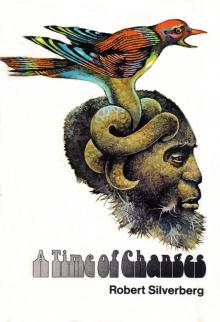 A Time of Changes
A Time of Changes This Way to the End Times: Classic Tales of the Apocalypse
This Way to the End Times: Classic Tales of the Apocalypse Beyond the Gate of Worlds
Beyond the Gate of Worlds Lord Valentine's Castle
Lord Valentine's Castle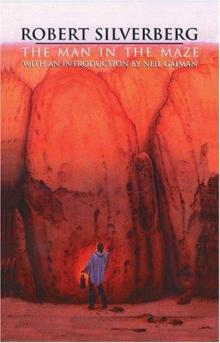 The Man in the Maze
The Man in the Maze Tales of Majipoor
Tales of Majipoor Time of the Great Freeze
Time of the Great Freeze The Collected Stories of Robert Silverberg, Volume 3: Something Wild Is Loose: 1969-72
The Collected Stories of Robert Silverberg, Volume 3: Something Wild Is Loose: 1969-72 Planet of Death
Planet of Death Trips: The Collected Stories of Robert Silverberg, Volume Four
Trips: The Collected Stories of Robert Silverberg, Volume Four In the Beginning: Tales From the Pulp Era
In the Beginning: Tales From the Pulp Era Hot Sky at Midnight
Hot Sky at Midnight Valentine Pontifex
Valentine Pontifex Up the Line
Up the Line Thorns
Thorns Amanda and the Alien
Amanda and the Alien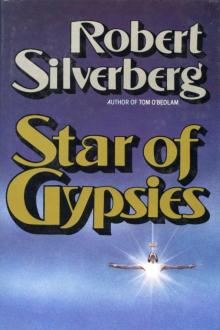 Star of Gypsies
Star of Gypsies Nightwings
Nightwings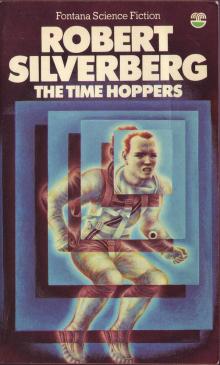 The Time Hoppers
The Time Hoppers Blood on the Mink
Blood on the Mink Dying Inside
Dying Inside The Last Song of Orpheus
The Last Song of Orpheus The King of Dreams
The King of Dreams The Stochastic Man
The Stochastic Man The Collected Stories of Robert Silverberg, Volume Seven: We Are for the Dark
The Collected Stories of Robert Silverberg, Volume Seven: We Are for the Dark The Millennium Express: The Collected Stories of Robert Silverberg, Volume Nine
The Millennium Express: The Collected Stories of Robert Silverberg, Volume Nine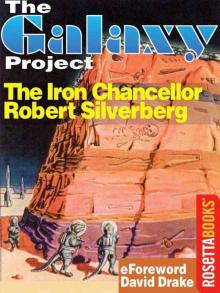 The Iron Chancellor
The Iron Chancellor Lord Prestimion
Lord Prestimion To Open the Sky
To Open the Sky The World Inside
The World Inside Chains of the Sea
Chains of the Sea The Collected Stories of Robert Silverberg, Volume Five: The Palace at Midnight
The Collected Stories of Robert Silverberg, Volume Five: The Palace at Midnight Postmark Ganymede
Postmark Ganymede The Second Trip
The Second Trip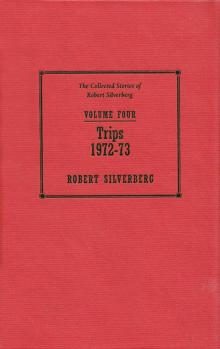 The Collected Stories of Robert Silverberg, Volume 4: Trips: 1972-73
The Collected Stories of Robert Silverberg, Volume 4: Trips: 1972-73 Son of Man
Son of Man Tom O'Bedlam
Tom O'Bedlam To the Land of the Living
To the Land of the Living To Be Continued: The Collected Stories of Robert Silverberg, Volume One
To Be Continued: The Collected Stories of Robert Silverberg, Volume One Shadrach in the Furnace
Shadrach in the Furnace The Chalice of Death: Three Novels of Mystery in Space
The Chalice of Death: Three Novels of Mystery in Space The Queen of Springtime
The Queen of Springtime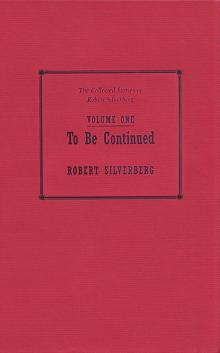 To Be Continued 1953-1958
To Be Continued 1953-1958 Legends
Legends Roma Eterna
Roma Eterna To Live Again
To Live Again At Winter's End
At Winter's End Needle in a Timestack
Needle in a Timestack To Live Again and the Second Trip: The Complete Novels
To Live Again and the Second Trip: The Complete Novels Lord of Darkness
Lord of Darkness The Mountains of Majipoor
The Mountains of Majipoor The World Outside
The World Outside The Alien Years
The Alien Years The Book of Skulls
The Book of Skulls The Face of the Waters
The Face of the Waters Gilgamesh the King
Gilgamesh the King The Collected Stories of Robert Silverberg, Volume 6: Multiples: 1983-87
The Collected Stories of Robert Silverberg, Volume 6: Multiples: 1983-87 The Happy Unfortunate
The Happy Unfortunate Three Survived
Three Survived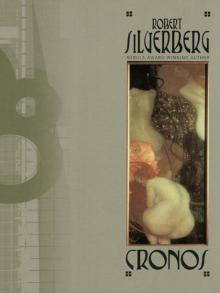 Cronos
Cronos Tower of Glass
Tower of Glass Legends II
Legends II The Planet Killers
The Planet Killers The Collected Stories of Robert Silverberg, Volume 2: To the Dark Star: 1962-69
The Collected Stories of Robert Silverberg, Volume 2: To the Dark Star: 1962-69 Downward to the Earth
Downward to the Earth Lord Valentine's Castle: Book One of the Majipoor Cycle
Lord Valentine's Castle: Book One of the Majipoor Cycle Hot Times in Magma City, 1990-95
Hot Times in Magma City, 1990-95 Hunt the Space-Witch! Seven Adventures in Time and Space
Hunt the Space-Witch! Seven Adventures in Time and Space Majipoor Chronicles
Majipoor Chronicles The Robert Silverberg Science Fiction Megapack(r)
The Robert Silverberg Science Fiction Megapack(r) Starman's Quest
Starman's Quest Car Sinister
Car Sinister Worlds of Maybe
Worlds of Maybe Fantasy The Best of 2001
Fantasy The Best of 2001 Revolt on Alpha C
Revolt on Alpha C Homefaring
Homefaring The Pardoner's Tale
The Pardoner's Tale Sailing to Byzantium - Six Novellas
Sailing to Byzantium - Six Novellas The Chalice of Death
The Chalice of Death Sundance
Sundance A Tip on a Turtle
A Tip on a Turtle Nebula Awards Showcase 2001: The Year's Best SF and Fantasy Chosen by the Science Fiction and Fantasy Writers of America
Nebula Awards Showcase 2001: The Year's Best SF and Fantasy Chosen by the Science Fiction and Fantasy Writers of America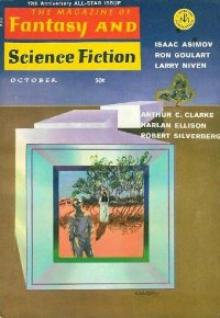 The Fangs of the Trees
The Fangs of the Trees The Palace at Midnight: The Collected Work of Robert Silverberg, Volume Five
The Palace at Midnight: The Collected Work of Robert Silverberg, Volume Five The Millennium Express - 1995-2009 - The Collected Stories of Robert Silverberg Volume Nine
The Millennium Express - 1995-2009 - The Collected Stories of Robert Silverberg Volume Nine Book of Skulls
Book of Skulls Passengers
Passengers Something Wild is Loose - 1969–72 - The Collected Stories of Robert Silverberg Volume Three
Something Wild is Loose - 1969–72 - The Collected Stories of Robert Silverberg Volume Three Multiples
Multiples Starborne
Starborne The Masks of Time
The Masks of Time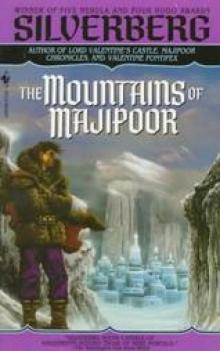 The Mountains of Majipoor m-8
The Mountains of Majipoor m-8 Multiples (1983-87)
Multiples (1983-87) Those Who Watch
Those Who Watch In the Beginning
In the Beginning Earth Is The Strangest Planet
Earth Is The Strangest Planet Collision Course
Collision Course Neutral Planet
Neutral Planet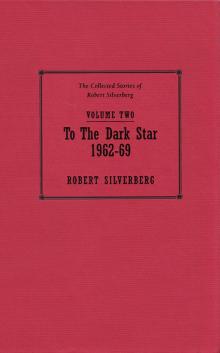 To the Dark Star - 1962–69 - The Collected Stories of Robert Silverberg Volume Two
To the Dark Star - 1962–69 - The Collected Stories of Robert Silverberg Volume Two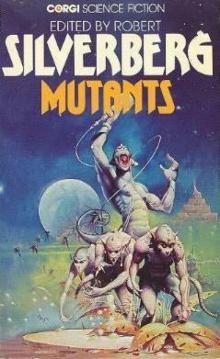 Mutants
Mutants Sailing to Byzantium
Sailing to Byzantium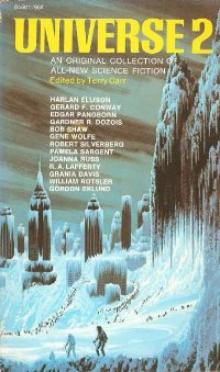 When We Went to See the End of the World
When We Went to See the End of the World Robert Silverberg The Science Fiction Hall Of Fame Volume One, 1929-1964
Robert Silverberg The Science Fiction Hall Of Fame Volume One, 1929-1964 To Be Continued - 1953–58 - The Collected Stories of Robert Silverberg Volume One
To Be Continued - 1953–58 - The Collected Stories of Robert Silverberg Volume One Valentine Pontifex m-3
Valentine Pontifex m-3 Gianni
Gianni Majipoor Chronicles m-2
Majipoor Chronicles m-2 We Are for the Dark (1987-90)
We Are for the Dark (1987-90) Waiting for the Earthquake
Waiting for the Earthquake Fantasy: The Best of 2001
Fantasy: The Best of 2001 How It Was When the Past Went Away
How It Was When the Past Went Away Beauty in the Night
Beauty in the Night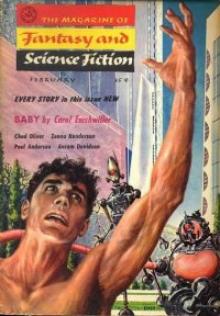 The Man Who Never Forgot
The Man Who Never Forgot The Book of Changes m-9
The Book of Changes m-9 Lord Valentine's Castle m-1
Lord Valentine's Castle m-1 This Way to the End Times
This Way to the End Times Queen of Springtime
Queen of Springtime Legends-Volume 3 Stories by the Masters of Modern Fantasy
Legends-Volume 3 Stories by the Masters of Modern Fantasy The Palace at Midnight - 1980–82 - The Collected Stories of Robert Silverberg Volume Five
The Palace at Midnight - 1980–82 - The Collected Stories of Robert Silverberg Volume Five Something Wild is Loose: The Collected Stories of Robert Silverberg, Volume Three
Something Wild is Loose: The Collected Stories of Robert Silverberg, Volume Three Multiples - 1983–87 - The Collected Stories of Robert Silverberg Volume Six
Multiples - 1983–87 - The Collected Stories of Robert Silverberg Volume Six Alaree
Alaree Three Survived: A Science Fiction Novel
Three Survived: A Science Fiction Novel Defenders of the Frontier
Defenders of the Frontier The New Springtime
The New Springtime We Are for the Dark - 1987–90 - The Collected Stories of Robert Silverberg Volume Seven
We Are for the Dark - 1987–90 - The Collected Stories of Robert Silverberg Volume Seven The Science Fiction Hall of Fame, Volume One 1929-1964--The Greatest Science Fiction Stories of All Time Chosen by the Members of the Science Fiction Writers of America
The Science Fiction Hall of Fame, Volume One 1929-1964--The Greatest Science Fiction Stories of All Time Chosen by the Members of the Science Fiction Writers of America Master Of Life And Death
Master Of Life And Death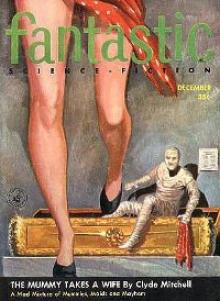 Choke Chain
Choke Chain Sorcerers of Majipoor m-4
Sorcerers of Majipoor m-4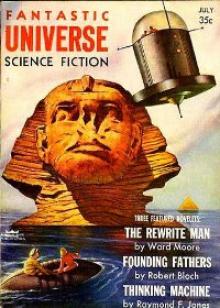 Absolutely Inflexible
Absolutely Inflexible Trips - 1962–73 - The Collected Stories of Robert Silverberg Volume Four
Trips - 1962–73 - The Collected Stories of Robert Silverberg Volume Four Hot Times in Magma City - 1990-95 - The Collected Stories of Robert Silverberg Volume Eight
Hot Times in Magma City - 1990-95 - The Collected Stories of Robert Silverberg Volume Eight Far Horizons
Far Horizons The Queen of Springtime ns-2
The Queen of Springtime ns-2 The Seventh Science Fiction Megapack
The Seventh Science Fiction Megapack Invaders From Earth
Invaders From Earth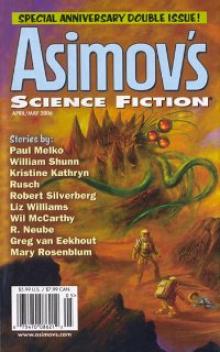 Hanosz Prime Goes To Old Earth
Hanosz Prime Goes To Old Earth The Macauley Circuit
The Macauley Circuit Science Fiction: The Best of 2001
Science Fiction: The Best of 2001 To the Dark Star: The Collected Stories of Robert Silverberg, Volume Two
To the Dark Star: The Collected Stories of Robert Silverberg, Volume Two Stochastic Man
Stochastic Man Legends: Stories By The Masters of Modern Fantasy
Legends: Stories By The Masters of Modern Fantasy To Live Again And The Second Trip
To Live Again And The Second Trip Flies
Flies The Silent Invaders
The Silent Invaders Ship-Sister, Star-Sister
Ship-Sister, Star-Sister